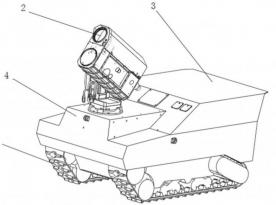The Air Force of Ukraine revealed the number of guided glide bombs russian invasion forces spend in Ukraine on a daily basis. This is approximately 20 units a day launched upon areas near the frontline and adjacent to the state border.
With its 70-km flight range, a glide bomb launched from a safe distance reaches civilian infrastructure and residential buildings in Chernihiv, Sumy, Kharkiv, Zaporizhzhia and Odesa regions all along the frontline, said the spokesman of the Air Force Command Yurii Ihnat during a briefing at Media Center Ukraine.
Read more: The Ukrainian Air Force Described the Capabilities of the russian Analogue of JDAM-ER Called UMPK
He also noted that the only effective countermeasure is destroying the carriers of these bombs, namely Su-34 and Su-35 aircraft. However, the increased range of attack provided by gliding allows the russian attack aircraft to stay out of reach of Ukrainian air defenses inherited from the Soviet era.
This circumstance once again highlights the necessity of Ukraine receiving Western fighter aircraft, Ihnat stressed. Even the two newly-arrived Patriot missile systems and a SAMP/T system, that is yet to come, cannot cover all the threatened directions.
Air Force speaker also provided some details about the quality of the UMPK (the russian name for their glide bomb, a FAB 500 with a guidance and flight adjustment kit). Worth noting, military media in russia also raise this topic quite often because the russian creation looks way too poorly made even in comparison to the iranian reverse-engineered copy of American JDAM.

In particular, among the issues discussed in russia, the weight of a FAB-M62 equipped with the UMPK kit is too big for the standard pylon that holds it under the wing. It leads to occasions when such a bomb just unintentionally detaches from the fastening, and the result may be exactly the same as we have seen recently.
As noted, when a UPKM bomb involuntarily detaches from the pylon, the fuze is automatically switched into a combat state the moment it breaks free. That was one of the reasons why the development of the previous version of this glide bomb was stopped in the 2010s.
There is also a problem with the fin unfolding mechanism that is powered by a spring. When you try to fold the device to attach it to the pylon, you have to do it with your own hands. Some technicians have already been hospitalized when they couldn't manage to properly apply the retainer, and so the fins spring out injuring them.
The russians also provide results of the computer modeling of the aerodynamic properties of a FAB-500M62 with UMPK; these properties are poor, they say. As we can see, the person in charge of modeling had a fairly large amount of information about the device. The model has additional aerodynamic surfaces and a V-shaped stabilizer. You can only notice them in the single public photo if you already know they are there.

In the meantime, the news about russians using twenty such glide bombs a day when the first information about them came just this year means russians have established mass production. Moreover, the russian forces are gaining real combat experience in applying this kind of weapon and empirical data for improvements to increase the effectiveness of this glide bomb.
Read more: What Fell on Belgorod: Video Shows How the russian Bunker Busters Work














